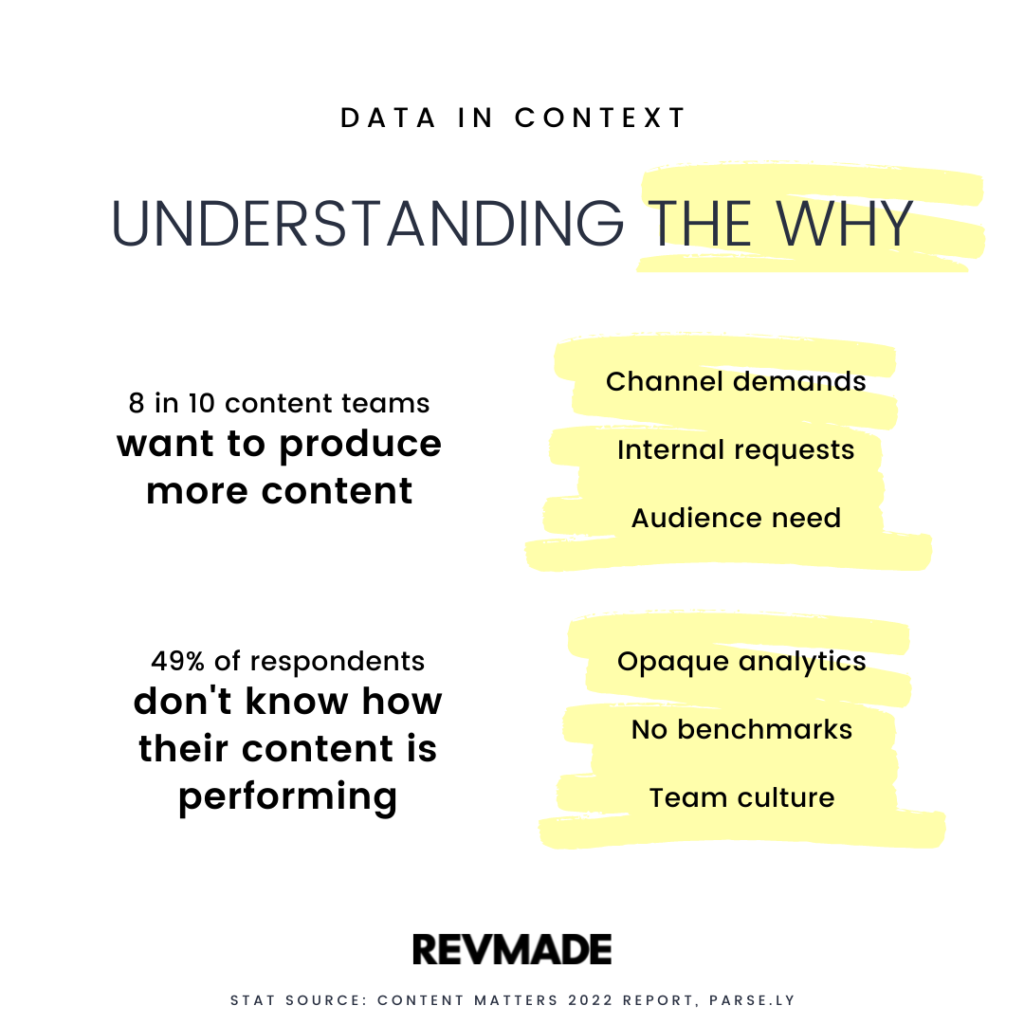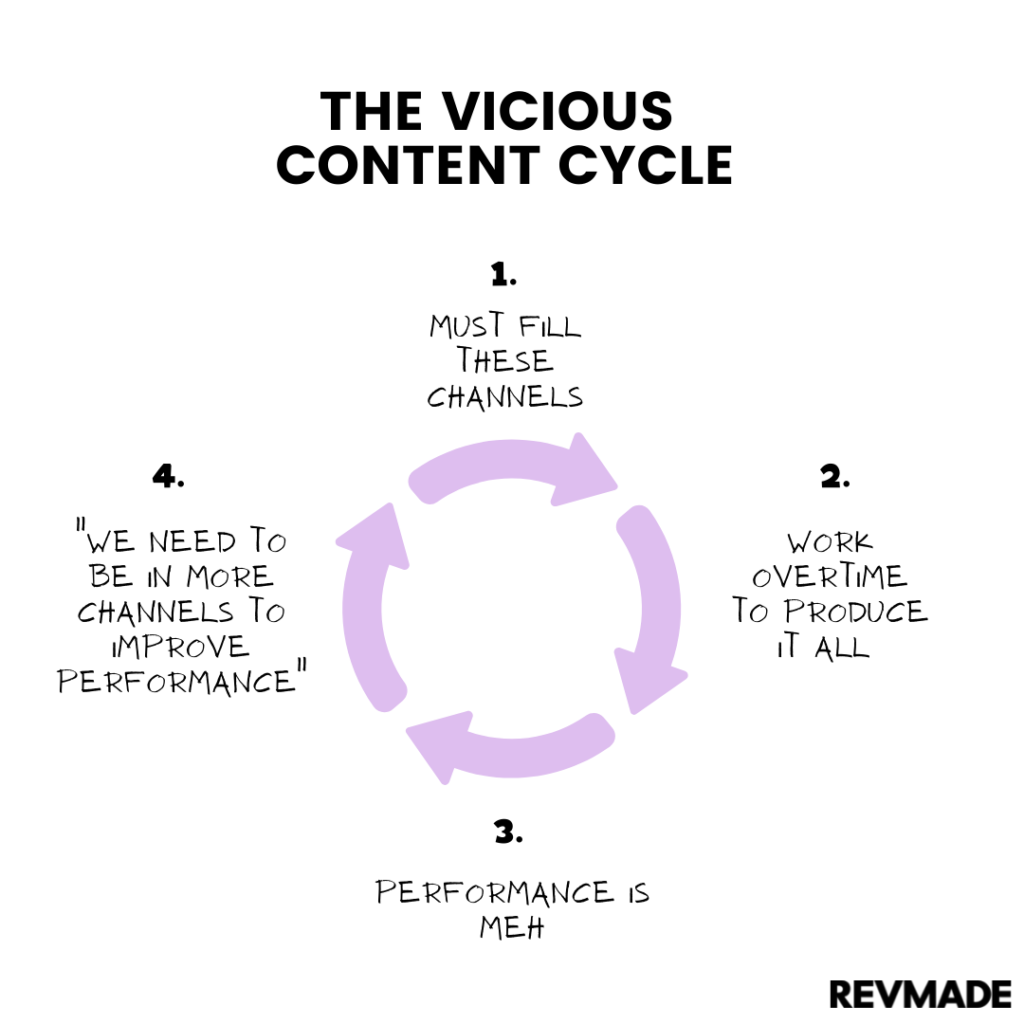The vicious cycle of “more content!” and how to break It
Research shows most organizations want more content than ever. But only half know if it’s even working.Content teams are small. Content demand is high.
Content teams want to produce more. But they have trouble justifying the investment.
What’s happening here? It’s long been understood that content is the currency of digital media, and the organizations that can leverage it to earn attention have a significant competitive advantage. New research from Parse.ly highlights a core issue: Almost half of content teams don’t know how content is performing, and almost all of them can’t tie content to revenue.
When audience and performance data isn’t analyzed, shared and/or put in context of strategy, it sets in motion a vicious cycle for content marketers. It forces you to be on a treadmill of content creation, even as audience attention is at a premium.
Let’s get into it.

Does this sound familiar? Your content team flexes to meet the demands of your channels: There are social feeds to fill, newsletters to satisfy, websites that need to be updated, search rankings to achieve. Your content team is also getting an influx of demands from business development and other departments: Can you create something for this upcoming event? Wouldn’t a video of our process be great for this page on our website?
The Most Common Scenario

You create the content. Your team is a machine, and you get it all done.
But you have no idea if it’s working. Because truthfully, you’re just trying to survive the demands of producing all this content. Success looks like producing even more, right?
This is the most common scenario we encounter.
Breaking the Cycle
The problem with this sequence is that it leaves out the most important stakeholder in the process: The target audience.
The best content producers understand their target audiences and meet the demands of their audiences as a rule. Sometimes that means creating more highly sought content. The key is understanding what your audience really needs before committing to producing a lot of content for content’s sake.
Without a strong connection to the audience — and an agreement across your organization to first serve that stakeholder — your content marketing will never be as successful as it could be.
There are six steps to break the cycle:
- Study your audience. Empower yourself and your team with information about your target audience: What media do they rely on? What information are they already consuming? What are their pain points? What questions remain unanswered? Our analysis always includes an in-depth study of online behavior, along with audience interviews for context.
- Declare your reason for being. What service is your content offering to your audience based on their needs, your company’s expertise and your team’s goals?
- Educate your requestors. Become an evangelist for your audience, sharing the data you found, your reason for being, and your plan to adhere to audience needs to improve business performance. Keep at it— a significant shift needs to happen at this step, where your requestors bring you business problems to solve through content (“How can we promote this product?”), not specific, prescribed solutions (“I need a video!”).
- Eliminate channels. This is one of the hardest steps, and not everyone can do it. But during your audience study, pay close attention to where your targets spend their time. You will likely be able to see some channels that can be cut, which will lead to higher quality content production in the ones that remain.
- Run a pilot. You’ll need to slowly start producing the kind of content your new strategy demands. Be specific about the content type, the channel and the desired outcome. The goal is to pilot to learn, then build scale into your operation for maximum impact.
- Share the results. If all of the previous steps have been followed, your content will have outperformed the rest of your efforts. Now is the time to take this case study to a wider group, reiterate your process and start over at step 3. Clear communication, coupled with understandable data in the context of business growth, will begin to move your culture forward.
TL;DR: Many of us are caught in a vicious cycle of content production, frustrated by — or unaware of — its performance. To break it, prioritize audience research, internal communication, and pilot projects.
Subscribe
Get our weekly newsletter for tips on how to drive better content marketing performance.
For a regular stream of ideas, research and links we find helpful. And of course, to say hi!
